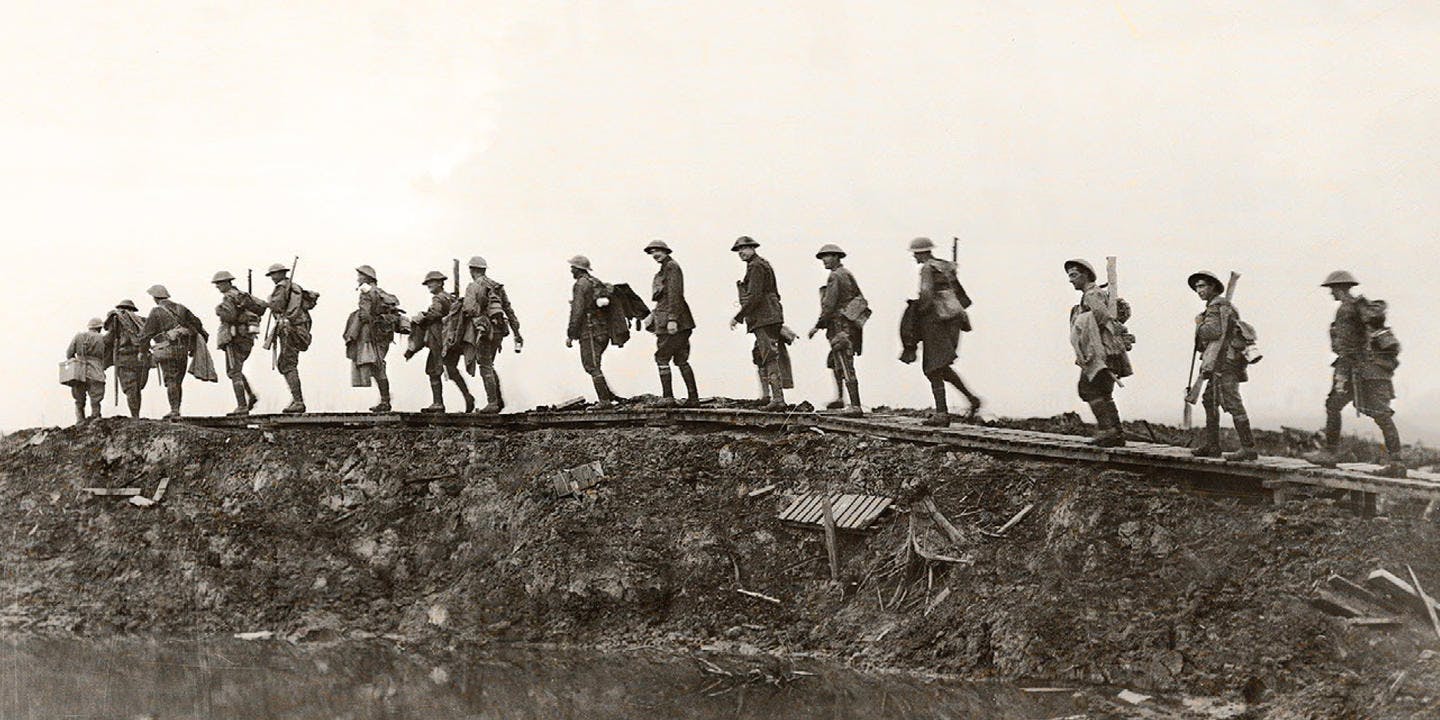The opening stages of the First Battle of Passchendaele.
On 12 October 1917 the attack later known as the First Battle of Passchendaele began. The Anzacs would again spearhead the offensive, this time ‘virtually without [artillery] protection’, as Charles Bean feared. Their orders were to capture Passchendaele village that afternoon.
To reach the new starting line – a melange of mud, water, corpses and detritus – the fresh Anzac brigades had to move in single file along a few miles of duckboards, before plunging into the morass. The journey took the entire night. The men had heard stories of the previous battle, of thousands crawling through mud into the attack. And the stories had a lethal effect on morale. A gunner who had fought at Poelcappelle witnessed one relieving battalion pass him, on 11 October, on their way to the front:
‘The reinforcements... shambled up past the guns with dragging steps and the expressions of men who knew they were going to certain death. No words of greeting... as they slouched along; in sullen silence they filed past one by one to the sacrifice.’
Many of these reinforcements got lost, fell into shell holes or were blown up on the way.
‘Before 5 am we had lost men like rotten sheep,’ recalls Lieutenant G. M. Carson. ‘I nearly got blown to pieces scores of times. We went through a sheet of iron all night and in the morning it got worse ... at times we were bogged up to our arm pits and it took anything from an hour upwards to get out. Lots were drowned in the mud and water.’
Lieutenant Russell Harris found it ‘impossible to shut one’s ears’ to the cries of men drowning: ‘When silence came it was almost like a physical blow, engendering a feeling bordering on guilt.’
The whistles blew at 5.25 am. If evidence for a miracle were needed, it lay here, in the sight of a fresh wave of Anzacs, rising once more under torrential rain and hurling themselves into No Man’s Land.
The artillery barrage was a whisper of its usual strength and offered no protective screen. The few hundred shells burst harmlessly in the mud, or veered off target. The residue passed thinly over Passchendaele, too fast for soldiers moving along slippery duckboards; or it fell short, sending ‘friendly’ shells onto their heads.
Against all hope or expectation, some Australians and New Zealanders reached their first objective, the red line, 1200 yards ahead. Their second goal, the blue line, the starting point for the assault on Passchendaele, was a further half-mile on; and their final objective, the green line, 400 yards beyond the village. Bear in mind that these ‘lines’ were simply map references; the ground itself was all the same – a glutinous mass of mud and water on an upwardly curving plain.
Few got further than the red line. The belts of German wire were fully intact, as their commanders knew. Stuck in the open beneath the spur, without artillery protection, the men came under merciless German sniper and machine-gun fire, which spattered across the bog like a wave of hail.
The entire Antipodean attack broke down in the swamps of the Ravebeek Valley. Thousands were shot standing knee-deep in mud, unable to move. Within hours, Australian casualties had reached 4500, dead and wounded. They included Captain Clarence Smith Jeffries, awarded the Victoria Cross posthumously, the last Australian to receive the decoration during Third Ypres, for leading the destruction of a machine gun that had blocked his unit’s path.
Keep your eyes out for the next in this series of posts by Paul Ham, tracking the key moments and turning points in the Battle of Passchendaele.














